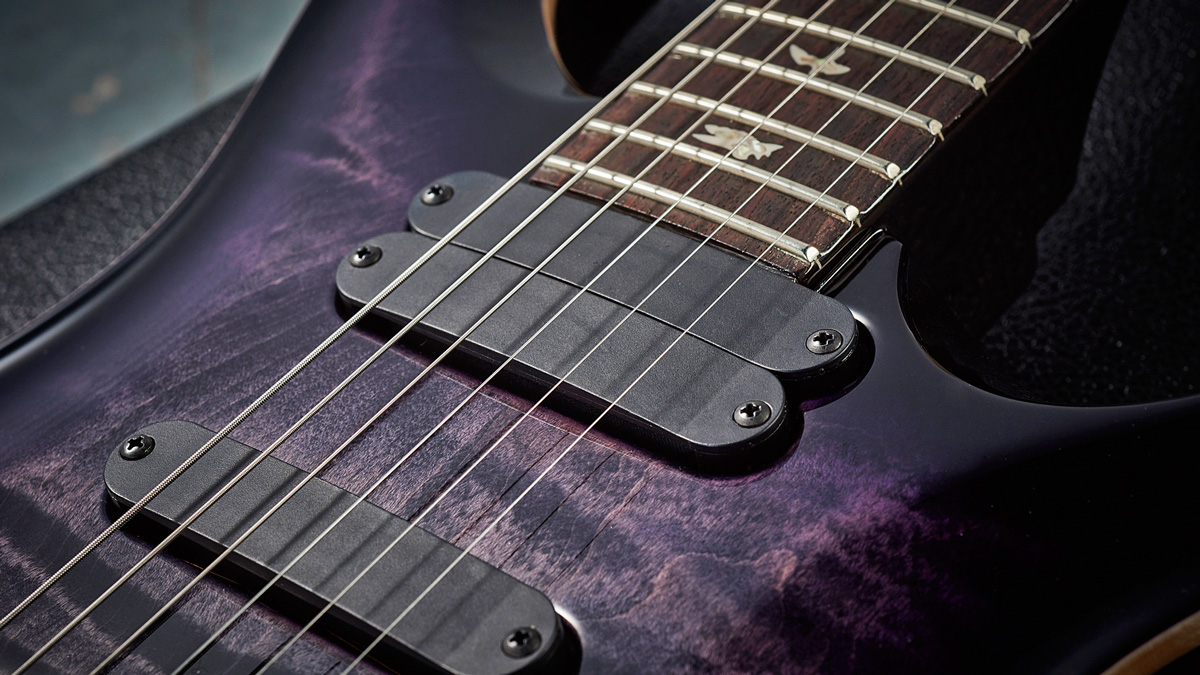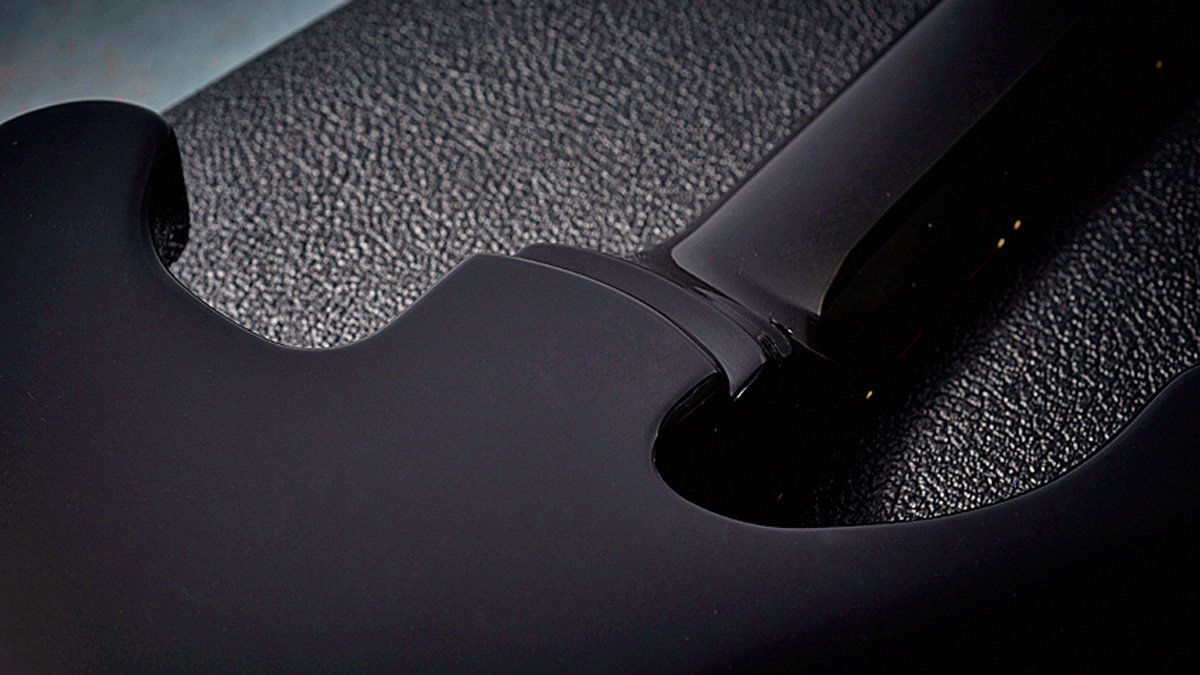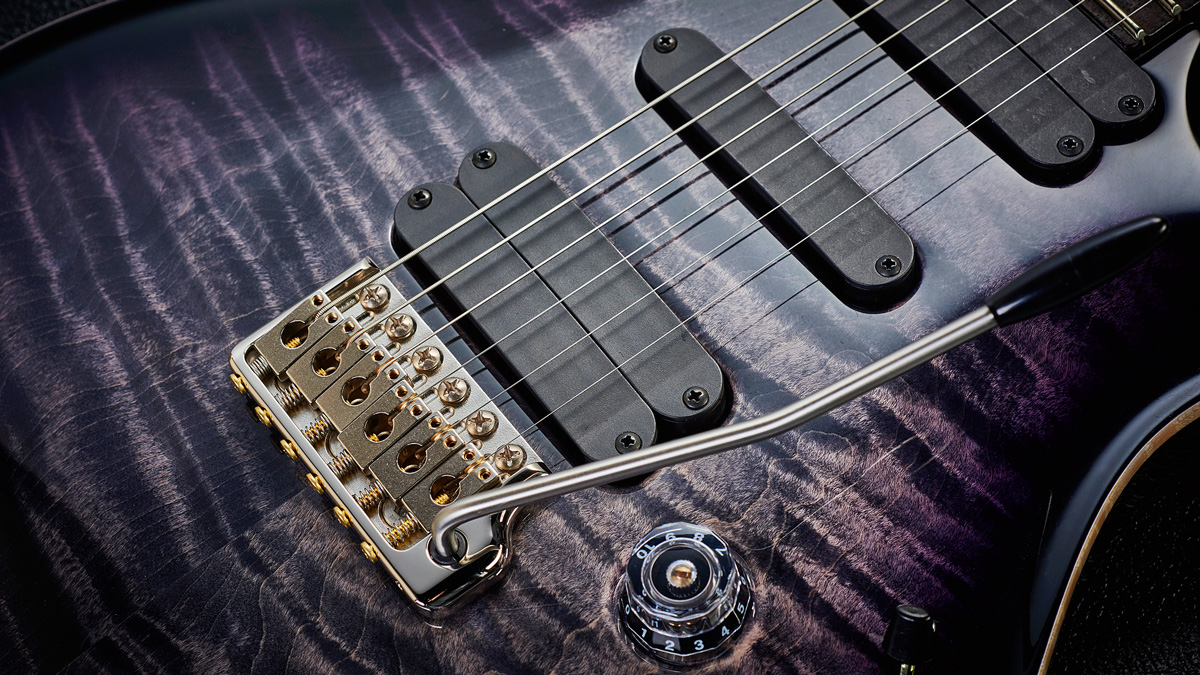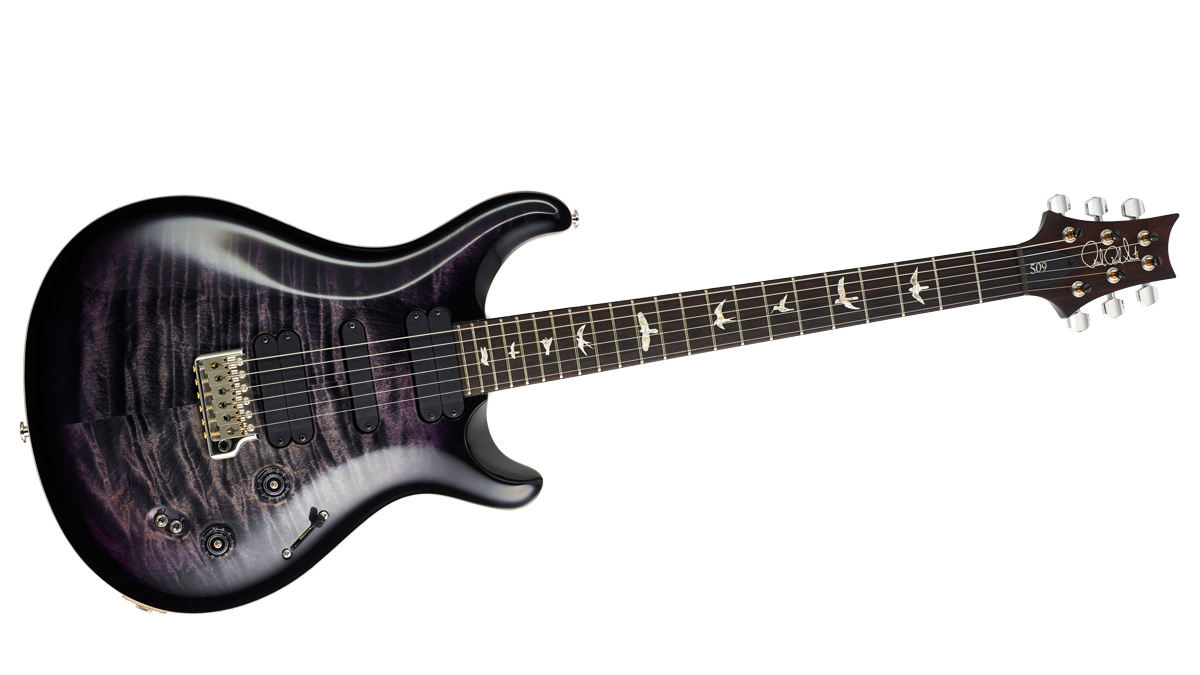MusicRadar Verdict
A guitar that might make you rethink the ‘single-coil sound’: there’s nothing remotely over-bright or thin-sounding here.
Pros
- +
Superb ‘super car’ build and feel.
- +
A humbucking guitar with single-coil sparkle.
Cons
- -
A lot of cash, even for two guitars in one.
- -
Are we really getting the single-coil hit we want?
MusicRadar's got your back
It’s some 13 years since PRS introduced the 513.
It promised more sounds - and supplied them - but a decade and a bit in the guitar industry is a long time. The 513 is dead: long live the 509!
The new guitar continues the 513’s ‘five single coil’ concept, but reduces its available sounds. However, on paper at least, it’s still the most versatile PRS currently being made.
Grouped into the trio of ‘Speciality’ models in PRS’s Core USA-made line, the 509 certainly remains rather unique to PRS 2017. For starters, it’s the only three-magnetic-pickup model currently being made; the others all have dual humbuckers. In fact, it’s the only Core model to offer a true single-coil pickup, period.
It’s also the only guitar to feature a 641mm (25.25-inch) scale length, the longest standard scale currently offered by PRS outside of extended baritone or bass scale lengths. And it also has a unique neck joint - the body heel is extended, as it was on the 513, which is intended to add a little more Singlecut-like low-end content.

In most other aspects, though, it’s very much PRS: that classic double-cut outline and flamed maple-topped mahogany construction (with McCarty depth); those ubiquitous bird inlays on the unbound rosewood ’board with its ‘halfway’ 254mm (10-inch) radius. It also shoots for the biggest ‘jumbo’ fretwire that PRS employs, as seen on the DGT and Santana guitars.
Hardware looks familiar, certainly the Phase III open-backed tuners with their top-locks and aluminium buttons, but the vibrato is another new-for-2017 design. This Gen III is an upgrade to all Core vibrato-equipped models, and “the mounting screws have been redesigned with a larger thread and a larger custom head”, says PRS.
“This added mass creates more contact from the screw to the bridge and the guitar’s body, resulting in greater sustain… [Also], grooves have been added to the bridge plate [that are] radius’d to match the radius of the height adjustment screws, again so there is more contact and a better fit.”
As its price suggests, the drive here should be first class and few players will have any issues
It’s typical PRS: constant attention to the smallest detail if it improves the recipe. Now, the 509 certainly isn’t the only PRS guitar to offer single-coil sounds alongside humbucking voices - that’s always been a feature of PRS guitars since the first Custom was introduced. Today, the Custom achieves this duality from its five-way lever selector, while other vibrato guitars, such as the DGT, use a three-way toggle pickup selector with a pull/push switch on the tone control to introduce partial coil-splits of the twin humbuckers.
Like the other two Speciality guitars - the 408 and Paul’s Guitar - however, the 509 has two discreet, small-tipped mini-toggle switches. In ‘down’ position, they voice both coils of each humbucker, but on each pickup, one of the coils is tapped (namely, we’re not getting its full output - effectively, this is the ‘clear’ humbucking sound of the 513).
In the ‘up’ position, it’s the outer single coil of the bridge pair and the inner single coil of the neck pair that are voiced. Consequently, measuring the DC readings on the pickups, the humbucking selections come up with a fairly classic 8.02 and 8.29kohms for the neck and bridge. In single-coil modes, they drop to 5.72 and 5.84k; the central single coil measures 5.97k.
Sounds
As its price suggests, the drive here should be first class and few players will have any issues. The pattern regular neck fulfils that ‘it disappears’ feel, slightly narrower and less girthsome than the pattern profile, less deep than those big ol’ 50s Fender necks.
The additional 6.4mm to the scale length? Well, if you play as many guitars as we do, it’s hard to comment. If you only play a shorter Gibson scale, you’ll feel a little extra resistance to bends, less so if you’re a Fender player - but it’s subtle whatever direction you’re coming from.
The theory says we should expect a slightly zingier voice, but it sounds like a modern PRS to us and feels it, too: perfectly set up, really in tune, and these slightly bigger frets make it even more bend-friendly than, say, a Custom or our reference 2016 McCarty.
It’s interesting to compare the two - that subtle scale difference (the McCarty is 635mm/25 inches) and its Stoptail bridge versus the 509’s vibrato in what is otherwise a pretty identical build. The McCarty has just a little more acoustic ring and resonance; the 509 sounds a little smoother. We’re hearing the whole guitar and feeling its resonance, though, from the tip of the head to the base of the body. Yes, that’s what you’d expect, but it’s not always what you get, even at these prices.

If you expect a guitar that switches from ’59 ’Burst to ’54 Strat, then you might be disappointed - the differences you hear on those two benchmarks are about more than just the pickups. Paul Reed Smith is particularly picky about high-end, and likewise his artists, Carlos Santana being one. So if you want thin ice-pick-like highs, look elsewhere.
The central single coil is a good place to start with sparkle and depth. The Strat-like mixes either side retain that sparkle with their hollowed bouncy funk as you’d expect. Still in single-coil mode, the neck’s inner coil is big and fruity, perhaps lacking some choppier highs. Pulling the volume back doesn’t quite clean up enough - it’s almost as if we’d like to lose a little girth, too.
In contrast, the bridge veers to a spikier sound, but referencing against our well-used Strat again, there’s more thickness and body here. As we said, the ‘clear’ humbucking mode doesn’t introduce a volume leap: at lower volumes it’s surprisingly subtle, adding a little oomph at the bridge and a touch more thickness at the neck.
Swapping to our McCarty, it does have a little more classic clarity, certainly on the neck pickup - in both full and split modes - which might be less important on more gained voices. Still, it gets our vote for cleaner duties, though, of course, it has no specific ‘Strat’ sounds.

But referencing aside, and just thinning a little low-end and lower mids from our test rig, the 509 begins to shine: less to ape past benchmarks, more to simply produce hugely usable humbucking/single-coil voices. These voices aren’t chalk and cheese, but they are imbued with a fullness and richness that – not for the first time with a modern PRS - creates the impression you’re listening to a sound that’s been EQ’d and tweaked with an almost subtle hint of compression and dollop of thickness added. It’s quite a grower.
So is the 509 a valid addition to PRS or a guitar too far? It is unique in its number of sounds, its scale length and that middle-placed single coil, which all move it towards a more Strat-like voice.
But it’s a relatively subtle shade compared with the other vibrato-equipped PRS Core models that also offer both humbucking and single-coil voices: the Custom, DGT, 408 and Paul’s Guitar, not least that all five guitars share a very similar construction. Yes, the 509 does offer one more voice than either of the latter two, three more than the DGT and four more than the Custom, but is that enough to really give it a ‘must-have’ USP? Well, we could ponder that for some time.
What the 509 does offer us remains its Strattier take on the PRS flavour, as well as all of the fine craft that PRS is renowned for - it’s a hugely considered pro-quality piece that’ll last you a lifetime. Would we like to hear more ‘Fender’, maybe listen to these 509 sounds on PRS’s bolt-on CE platform, or perhaps see it with a light ash or alder body? Yes, but as it stands, if you’re primarily a humbucking player looking for some additional single-coil, Strat-y sparkle, the 509 has serious legs for the player needing that versatility in the one instrument.
Dave Burrluck is one of the world’s most experienced guitar journalists, who started writing back in the '80s for International Musician and Recording World, co-founded The Guitar Magazine and has been the Gear Reviews Editor of Guitarist magazine for the past two decades. Along the way, Dave has been the sole author of The PRS Guitar Book and The Player's Guide to Guitar Maintenance as well as contributing to numerous other books on the electric guitar. Dave is an active gigging and recording musician and still finds time to make, repair and mod guitars, not least for Guitarist’s The Mod Squad.
“The most musical, unique and dynamic distortion effects I’ve ever used”: Linkin Park reveal the secret weapon behind their From Zero guitar tone – and it was designed by former Poison guitarist Blues Saraceno’s dad
Arturia’s V Collection gets a Roland JP-8000 emulation and lo-fi synth/sampler, along with five more instruments and a host of updates
Capture the sound of The Last of Us season 2's haunting soundtrack with Spitfire Audio’s latest software instrument, Ronroco by Gustavo Santaolalla











